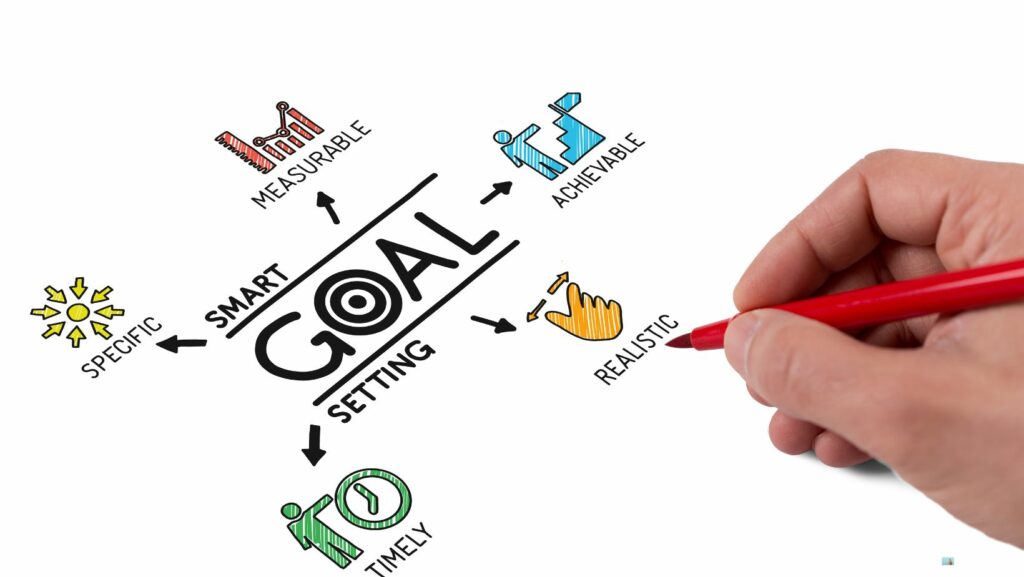In the world of personal and professional development, clarity and direction are paramount. That’s where the 5 Ws—Who, What, When, Where, and Why—come into play, transforming the art of goal-setting into a more streamlined and effective process. By addressing these quintessential questions, individuals and teams can craft a roadmap that not only specifies their objectives but also outlines the actionable steps required to achieve them.
The 5 Ws Are Most Helpful in Making a Goal-Setting Plan More ________.
The 5 Ws—Who, What, When, Where, and Why—serve as a fundamental framework in strategic planning and goal-setting. Employing these components ensures that all critical aspects of goal achievement are clearly defined and addressed.
What Are the 5 Ws?
 The 5 Ws consist of:
The 5 Ws consist of:
- Who: Identifies the people involved in the goal-setting process or needed to achieve the goal.
- What: Clarifies the specific goal or outcome that needs to be accomplished.
- When: Sets a timeline for when the goal should be achieved.
- Where: Specifies the location or environment required for working towards the goal.
- Why: Explains the reasoning and motivation behind setting the goal, which serves to inspire and guide efforts.
Why Use the 5 Ws in Goal-Setting?
Employing the 5 Ws in goal-setting offers numerous benefits:
 Enhances Clarity: It strips away ambiguity from the goals, making them simple and understandable.
Enhances Clarity: It strips away ambiguity from the goals, making them simple and understandable.
Promotes Strategic Thinking: Demanding answers to each of the 5 Ws, it encourages a thorough consideration of all facets of the goal.
Facilitates Accountability: By defining who is responsible and when specific actions are to occur, it ensures that individuals or teams are accountable for their roles.
Drives Effective Communication: Clarifying the what, why, and where aids in sharing the vision and purpose of the goals among stakeholders.
Supports Measurability: Establishing clear metrics for success as answered in the ‘what’ and ‘when’ makes tracking progress and outcomes easier.
Integrating these five questions into goal-setting strategies not only boosts the potential for success but also fortifies the process against common pitfalls such as misalignment of resources and miscommunication.
Incorporating the 5 Ws into Your Goal-Setting Plan
Who: Identifying Stakeholders and Their Roles
Identifying who involves listing all individuals or groups with a stake in the goals. For a corporation, stakeholders may include employees, managers, and shareholders. For personal goals, it might be family or mentors. Understanding each person’s role boosts engagement and ensures accountability. For instance, in a team project, delineating who is responsible for key deliverables allows the project to stay on track and reduces overlap in responsibilities.
What: Defining Clear and Achievable Goals
“What” requires specifying what you aim to achieve. Goals should be clear and measurable. Using the SMART criteria—Specific, Measurable, Achievable, Relevant, and Time-bound—helps in setting goals that are not only clear but also within reach. For example, instead of setting a vague goal like “increase sales,” a more specific goal would be “increase sales by 15% in the next quarter.”
When: Establishing Timeframes and Deadlines
 Timeframes and deadlines are crucial in the “When” step. Defining when each goal should be met keeps the plan on schedule. It also instills a sense of urgency and can motivate those involved to focus their efforts toward timely completion. For example, setting a deadline to complete a certification by the end of the year can expedite an individual’s professional development.
Timeframes and deadlines are crucial in the “When” step. Defining when each goal should be met keeps the plan on schedule. It also instills a sense of urgency and can motivate those involved to focus their efforts toward timely completion. For example, setting a deadline to complete a certification by the end of the year can expedite an individual’s professional development.
Where: Setting the Physical or Digital Space for Goals
The “Where” addresses the environment in which goals are pursued. For businesses, this may involve choosing a suitable office layout that fosters productivity or selecting a digital platform that supports remote collaboration. Utilizing spaces that align with the tasks at hand can significantly influence the efficiency and success of operations. For instance, choosing a quiet, organized space can enhance concentration and output for complex tasks.
Why: Articulating the Purpose Behind the Goals
Finally, the “Why” involves explaining the reasons behind setting specific goals. Understanding and articulating why each goal matters provides motivation and can align personal values with professional efforts. It also works as a compass, steering all related activities towards these underlying reasons. For example, a company may aim to enhance customer satisfaction to increase retention rates, tying this back to long-term profitability and market position.

